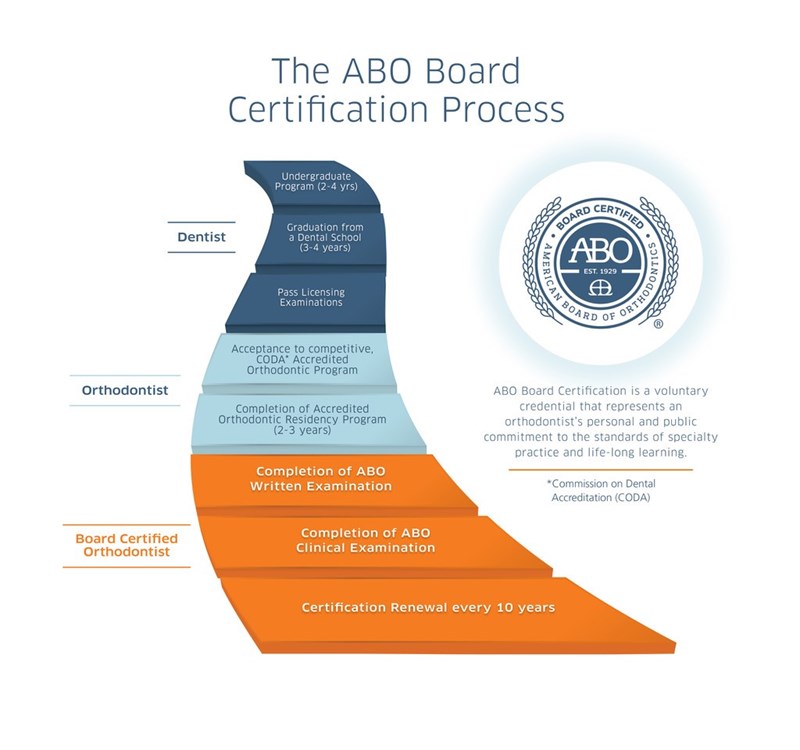What Does It Mean to Be a Board-Certified Orthodontist?
Are all orthodontists board-certified?
The answer is no. While every orthodontist must be licensed to practice, only about 50% go on to become board certified by the American Board of Orthodontics (ABO).
Earning board certification is a prestigious, voluntary achievement—one that goes far beyond the standard three years of advanced orthodontic training after dental school. To qualify, orthodontists must submit detailed case reports from real patient treatments and pass a rigorous evaluation conducted by a panel of expert examiners. This process ensures they possess exceptional knowledge, judgment, and clinical skills in orthodontics.
How Many Orthodontic Boards Are ADA-Recognized?
Just one—the American Board of Orthodontics (ABO).
Founded in 1929, the ABO is the only orthodontic specialty board recognized by the American Dental Association (ADA). As the oldest specialty board in dentistry, its mission is to elevate the quality of care through board certification, continuing education, and professional collaboration.
Why Do Some Orthodontists Choose Board Certification?
Pursuing board certification is optional, but many orthodontists see it as the gold standard of excellence in their field. Successfully completing the process reflects a deep commitment to:
Delivering the highest quality of care
Staying up to date with the latest clinical advancements
Continually improving patient outcomes
Demonstrating dedication to their specialty
For many, board certification represents both professional pride and personal accomplishment.
What Does the ABO Certification Process Involve?
The ABO certification journey has evolved to meet the growing demands of the specialty, yet it remains an in-depth and rigorous process. Today, it includes:
1. Written Examination
A comprehensive 240-question exam
Covers all areas of orthodontic knowledge
Must be passed before advancing to the next stage
2. Clinical Examination
Submission of detailed patient case reports demonstrating high standards of care
Evaluation by a panel of expert examiners
In-depth oral examination to test academic understanding and clinical decision-making
Once an orthodontist successfully completes both phases, they earn the title of Board Certified Orthodontist—a designation valid for a limited time.
ABO certification is not permanent. Orthodontists must renew their certification every 10 years to ensure they continue to meet the board’s high standards in patient care and professional development.
For further information about the American Board of Orthodontics, click here.


